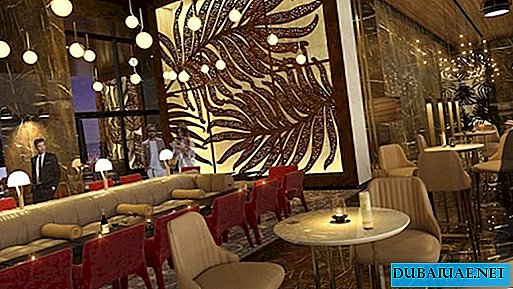
ON THE MAP OF THE UAE, THERE IS SURE THERE ARE A PLACE THAT HAS BEEN ALLOWED TO FIND OUT THE EMIRATE DESERT THAN THE LIVING OASIS. FOR SOMETIMES THERE "CURSED" ON THE ROADSIDE OF A VILLASTERLY WAVING COUNTRY, TODAY THE DESERT LIVA AGAIN ATTRACTS THE DESERVED ATTENTION OF TRAVELERS AGAIN.
ISLAND IN THE DESERT
As part of the modern administrative-territorial division, Liva is included in the Western region of the emirate of Abu Dhabi, called in Arabic Al-Garbiyya.
On the scale of all of Arabia, Liva, in fact, is the outskirts of the Rub al-Khali desert (from the Arabic “empty quarter”), one of the greatest and most dangerous deserts on the planet. It is at this point in the Emirates that you can escape from the sea of the Gulf and be surrounded by the royal sands of Arabia.


HOST OF DESERT
No matter how important the coastal centers of international trade and pearl mining are for the history of the Emirate lands, it was precisely with the harsh region of Liva that the development of the most powerful local tribe - the bath jas - was inextricably linked for a long time. The Yas baths were the "owners" of the desert part of the current UAE - they owned land for grazing their camels, and these lands covered virtually the entire territory of the modern emirate of Abu Dhabi. Liva determined the existence of the Bani Yas tribe at least from the 16th century. The sheikhs of the Al Bu Falyah tribal division, whose authority was worshiped by numerous groups in the tribe for more than ten generations, gained a special influence among the baths. Among Al Bu Falyah, the leading position belonged to the Al Nahyan family. It is this family that remains the ruling dynasty of Abu Dhabi to this day, and its representatives have served as president of the United Arab Emirates since their independence in 1971. Thanks to its far-sighted policies, the Al Nahyan family has evolved from the “masters of the desert” to the rulers of a rich and vibrant country. The rulers of the emirate of Dubai - the Al Maktoum family - belong to the Al Bu Falyah division of the same Bani Yas tribe.

One of the key events in the history of the emirate lands is connected with the appearance of a competitor in the Liv oasis. It was all about water. In the second half of the XVIII century. in the north of Abu Dhabi, fresh water was discovered, the reserves of which forced more and more members of the Bani Yas tribe to move here. The result was that in the first half of the 1790s, Sheikh Shahbut bin Ziyab, the head of Al Bu Falyah, decided to move his residence from the Liva oasis to the island in the Persian Gulf - Abu Dhabi. The relocation of the residence - almost the "capital" - was a major political shift. Al Nahayyan’s power was strengthened, becoming the basis of the modern emirate of Abu Dhabi. Of course, the shift in attention of the bathhouse to the Gulf gave them greater opportunities for contacts with the outside world. A peculiar red thread stretched from Liva to Abu Dhabi, linking together the future history of the UAE - a country of desert and sea at the same time.
However, modernity seems to have taken Liva's oasis by surprise. The twentieth century brought with it the decline of the pearl industry, then - the opportunity for local residents to get jobs in oil companies, do business or enter the public service. Not always were these opportunities permanent or attractive to the inhabitants of the oasis. Many of them saw them as a temporary activity for making money, which they then left to continue the work of their ancestors - to return to the oasis (now on a modern SUV) at the right time and harvest the dates. However, many residents left the oasis. Old people were lost before the turbulent changes in their own country.
The founder and first president of the UAE, Sheikh Zayed bin Sultan Al Nahyan, paid attention to the restoration of ancient fortresses in the oasis, which managed to collapse, taking care of its nature. The development of the oasis and the entire Western region does not stop even now, tens of billions of dirhams are invested in it.


Of course, one of the main tourist pearls of the Liva desert today is the luxurious Qasr Al Sarab Hotel, which opened in 2010. Its name translates as "Palace of the Mirage." It is part of the Anantara hotel chain and has already won the highest awards in the field of tourism. The architecture of the complex reflects the Emirate tradition, includes graceful arches and characteristic towers called the barge. Thanks to this, as well as the predominance of yellow-golden hues, the hotel surprisingly harmoniously merges with both the local nature and the local culture. Guests find themselves inside authentic Arabian interiors that are not separated from the sands of the desert. You can stay in a room or a private villa with a private pool. Each of the rooms gives a breathtaking view of the golden dunes, for which it’s worth to come here. The hotel is also famous for its diverse SPA services in the Anantara Spa complex, where the achievements of Western medicine coexist with Arab and Thai practices.


Frightening Hill
Today, the Liva district is also the venue for extreme sports festivals. The famous desert rally Abu Dhabi Desert Challenge has been going on for a quarter of a century. Desert racing lasts five days. Since 2006, the Moreeb International Festival has also been organized, Dune named after the Arabic name one of the highest dunes in the world located here. Its name translates as "frightening hill": indeed, the height of the Moreeb sand dune is 300 meters, the width of 1600 meters and a slope of 50 degrees make it look impregnable. But this does not scare away riders on cars and motorcycles from around the planet, trying to conquer it in the shortest time. By the way, more traditional types of competitions are also timed to the festival - horse races, camel races and even falcon races. A tourist can make a trip to the “frightening hill” both independently - an asphalt road is laid to the dune - and as part of an organized excursion. The toughest visitors can even follow in the footsteps of professional conquerors of the dunes and try to reach its summit on foot, however Tal Moreeb, of course, is known primarily for the races specially organized here.

Finally, lovers of antiquity will be able to explore several forts of the 18th-19th centuries. And motorists are unlikely to be impressed by the amazing "National Automobile Museum of the Emirates" created by Sheikh Hamad bin Hamdan Al Nahyan. It is located on the E-65 highway in less than an hour from Abu Dhabi. The museum contains hundreds of old, rare and completely extraordinary cars.

In many ways, the Oasis Eco Resort project, a luxurious oasis resort, the opening of which is scheduled for 2020, can be considered a symbol of the future of Liva. It is assumed that it will become the most environmentally friendly resort in the world. The resort will receive the necessary energy from solar panels, the total area of which will be nearly 15 thousand square meters. Its center - like hundreds of years ago in the Bedouin villages - will be a well that will be specially dug deep underground. It will provide water for the life of wild animals, as well as for the cultivation of fish and edible plants, which hotel guests can select for their own food - of course, resorting to the recommendations of a professional chef. They can also taste farm products from the vicinity of the resort - meat, dairy products, fruits and vegetables. The number of rooms will be relatively small - only 84. The resort will not emit any harmful emissions into the atmosphere, and garbage and waste water will be used in an environmentally friendly way. It is also important that the project aims to increase the employment of local residents and give guests more opportunities to get acquainted with their culture.
Of course, the desert region of Liva is not yet as spoiled by attention as the coastal Dubai or Abu Dhabi. But a careful look will certainly be able to discern its charm - the charm of the desert and its inhabitants. Desert sands seem monotonous only at first glance, but if you look closely, you will see how they sparkle with millions of faces and shades.
Author Nikolay Gudalov, Ph.D. in Political Science












